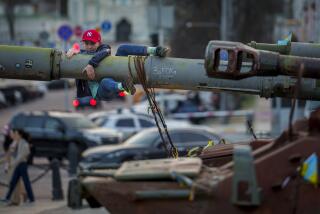Mideast Hot Spot
- Share via
The attack on a refinery complex in the Saudi Arabian border town of Khafji by Iraqi artillery from occupied Kuwait on Thursday has raised concerns over a vulnerable target in the Mideast: oil facilities. While the risks are obvious, there are some positive signs:
ADVANTAGES * Some Persian Gulf wells are spread 50 to 60 miles apart, making it unlikely that all could be bombed. * Oil reserves are thousands of feet below ground and are stored without oxygen, which prevents them from exploding. The oil could only be set ablaze by a direct hit, which is difficult. * Refineries, which are manufacturing plants, are vulnerable targets, but can be repaired within weeks or months. * Storage tanks of crude and refined oil are also vulnerable, but are generally isolated from each other with protective ditches. A storage tank of crude oil burns more severely and longer than refined oil, but is generally left to burn itself out.
RISKS * There is the possibility that oil wells in Kuwait have been mined by the Iraqis. If set ablaze, it could take 6 to 10 months to extinguish the flames. All oil fires pass toxic gases into the atmosphere. * There is the chance that crude oil would be pumped into many miles of trenches on the Kuwait/Saudi Arabian border and set afire, making it difficult for an advancing army to cross. * There is the possibility that quantities of oil could be deliberately spilled in the Persian Gulf, endangering wildlife and water supplies as well as crippling navigation. * In a worst case scenario, there is the possibility that hundreds of Kuwait wells would be sabotaged, sending thick poisonous smoke into the atmosphere, creating pollution and acid rain, blocking sunlight and destroying the agriculture in the region. This controversial scenario has been discredited by many scientists.
BACKGROUND * Numbers of Producing wells in 1987 Saudi Arabia: 588 (First fields discovered in 1938) Iraq: 868 (First fields discovered in 1909) Kuwait: 363 (First fields discovered in 1938) * Refineries Number of plants; millions of barrels a day Saudia Arabia: 7; 1,375.0 Iraq: 8; 318.5 Kuwait: 4; 817.0 Source: International Petroleum Encyclopedia, 1989 / Los Angeles Times
More to Read
Sign up for Essential California
The most important California stories and recommendations in your inbox every morning.
You may occasionally receive promotional content from the Los Angeles Times.













